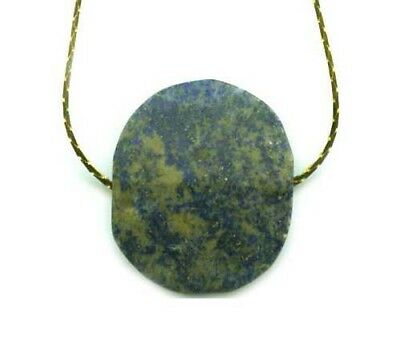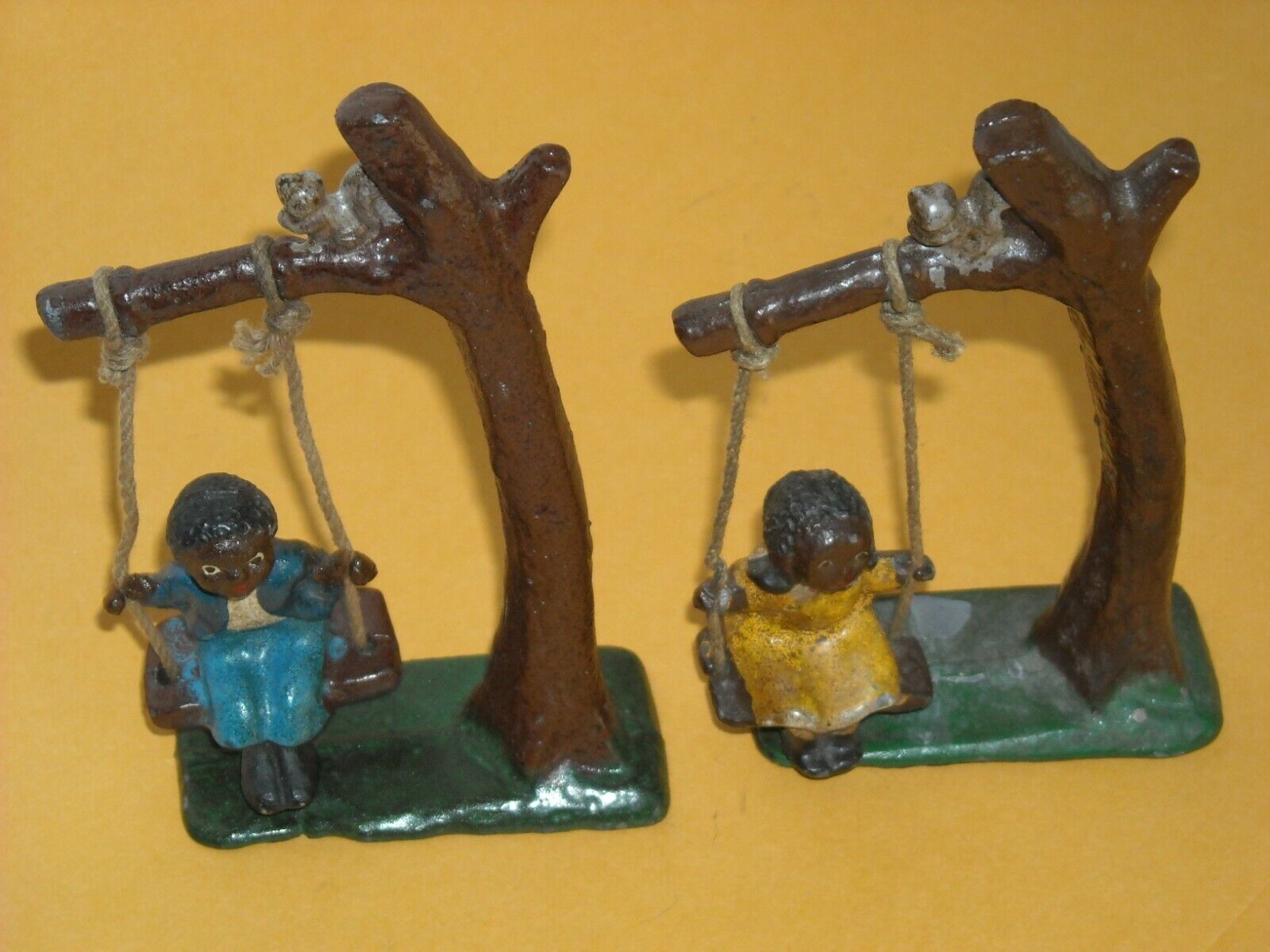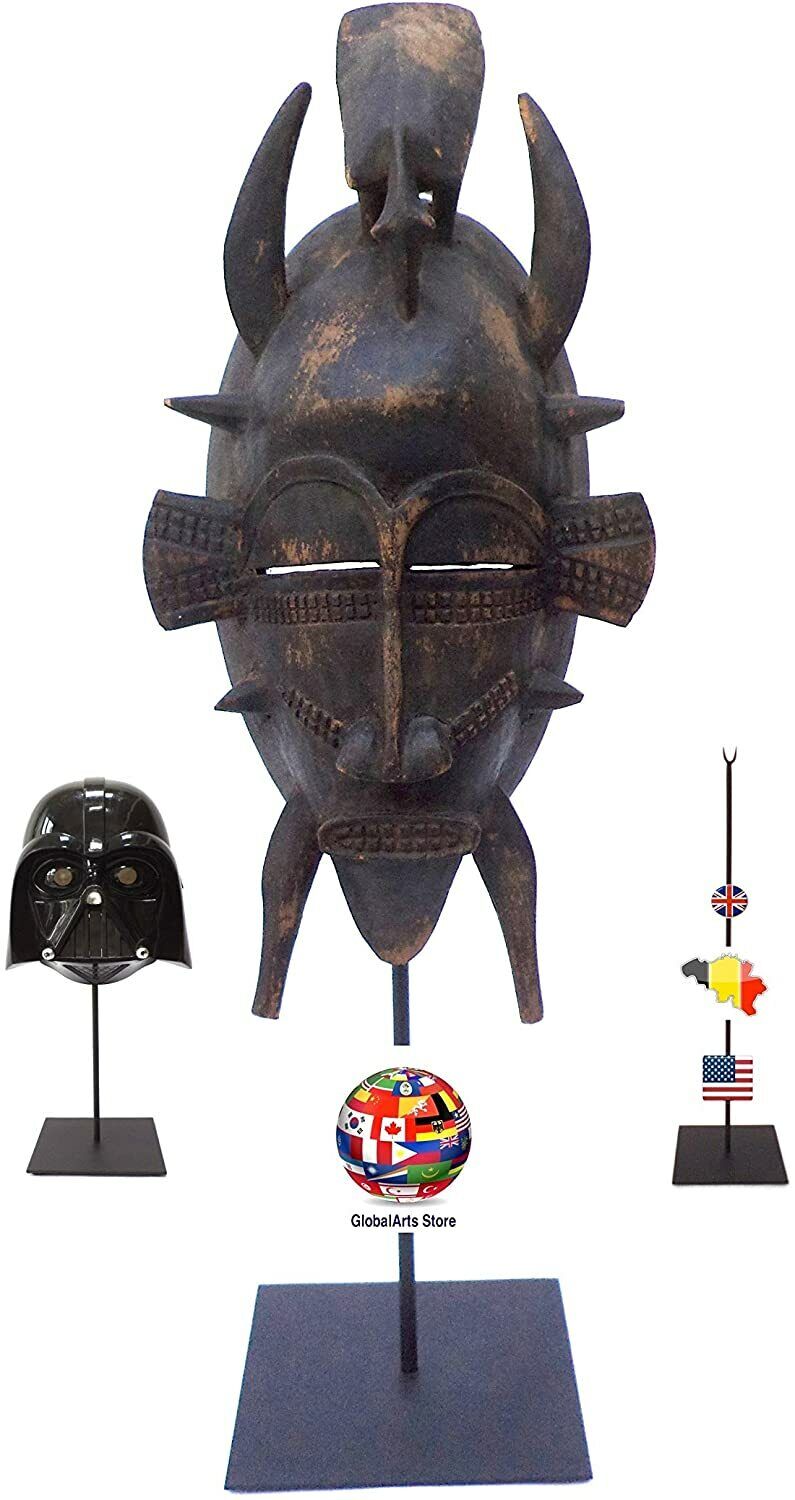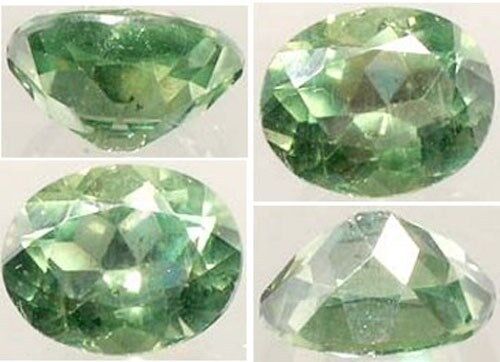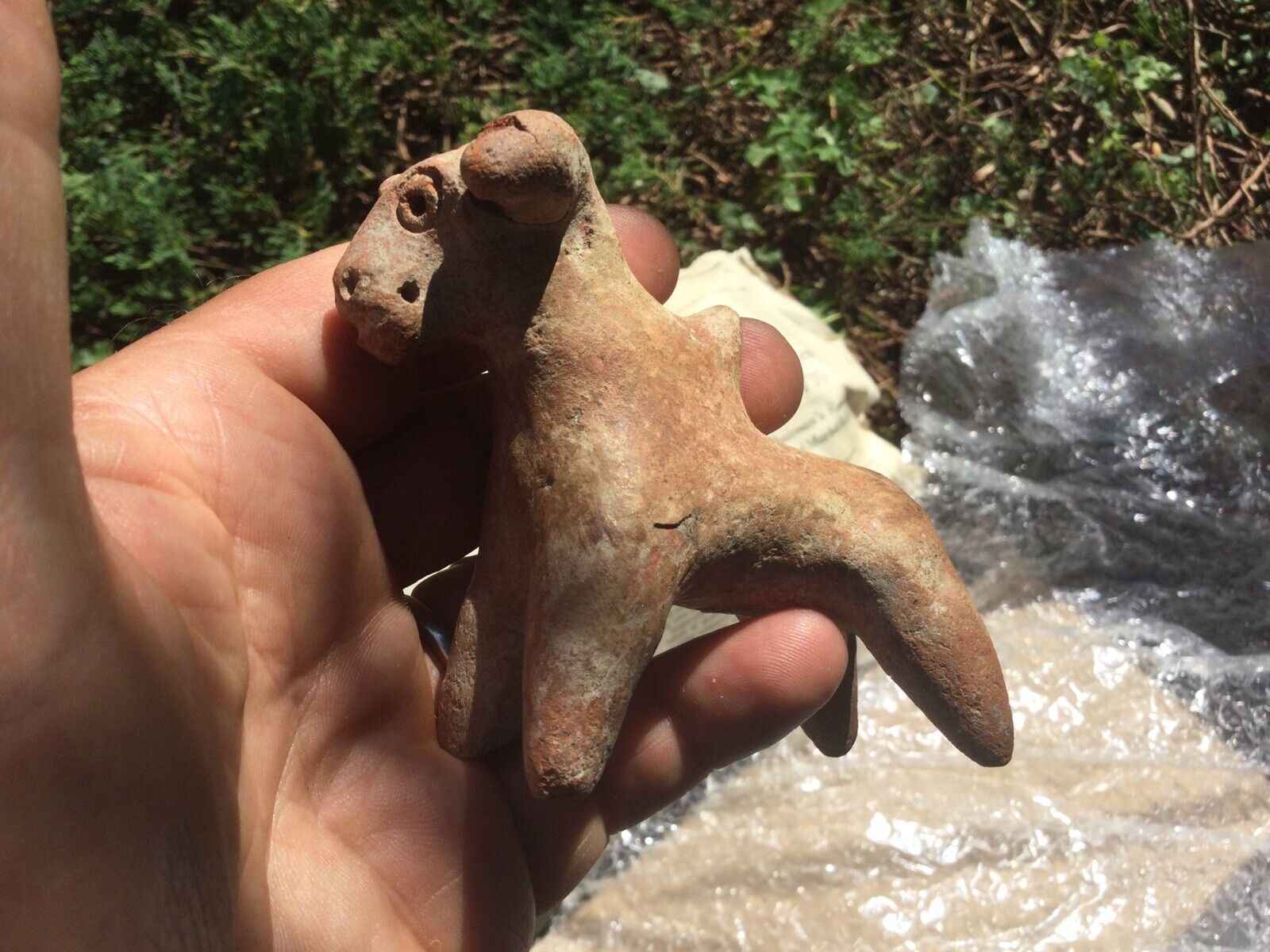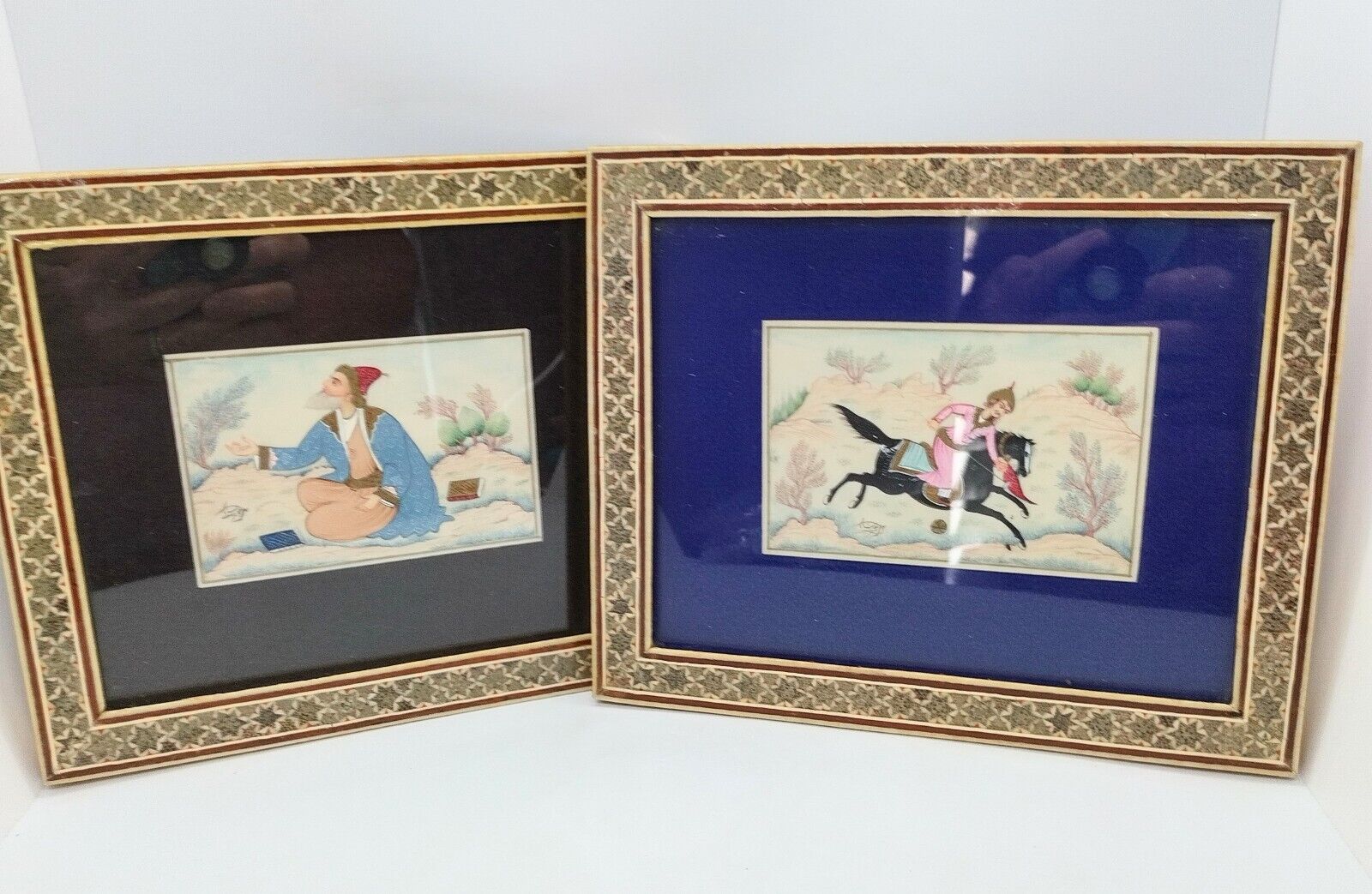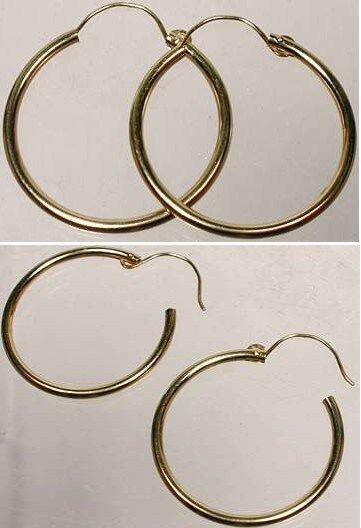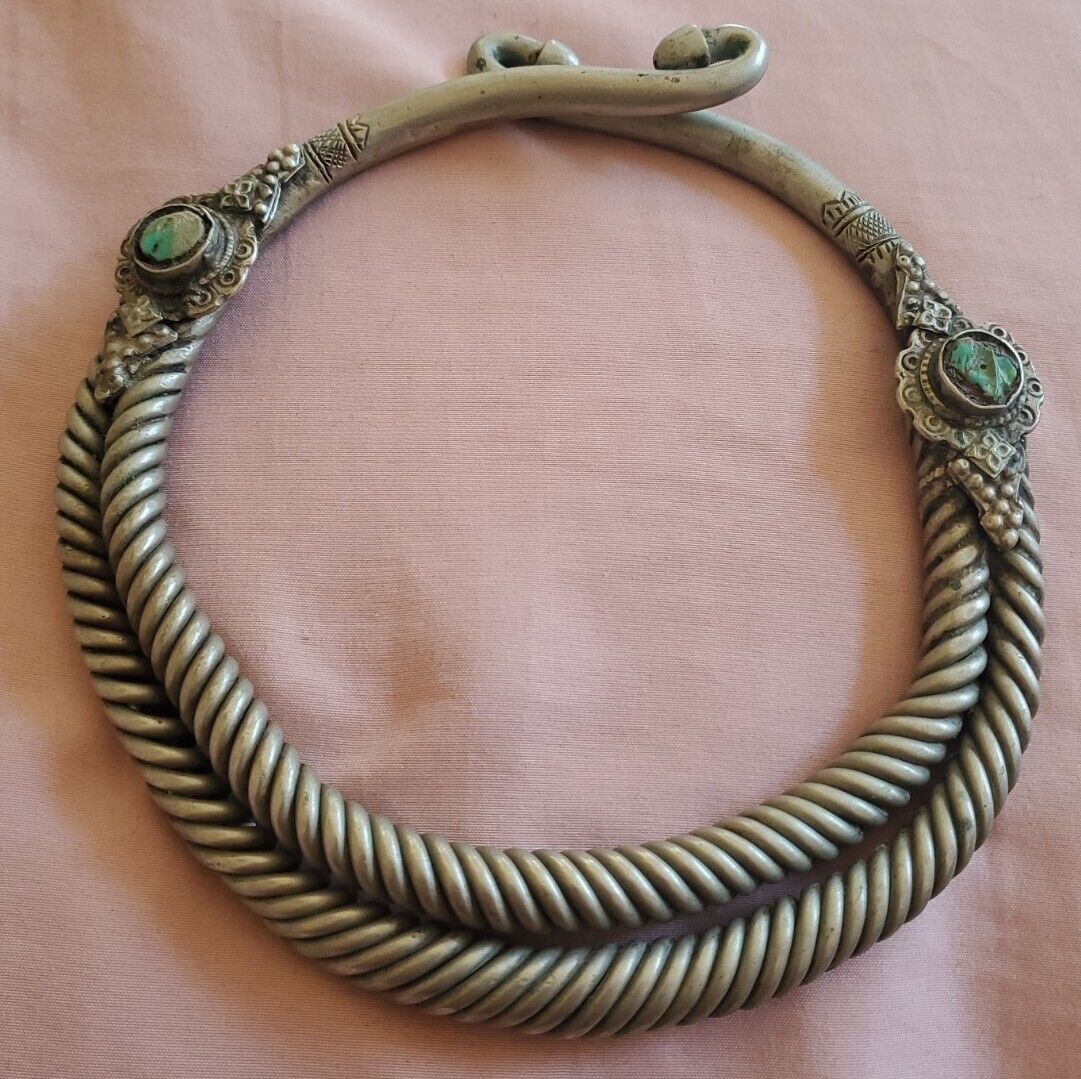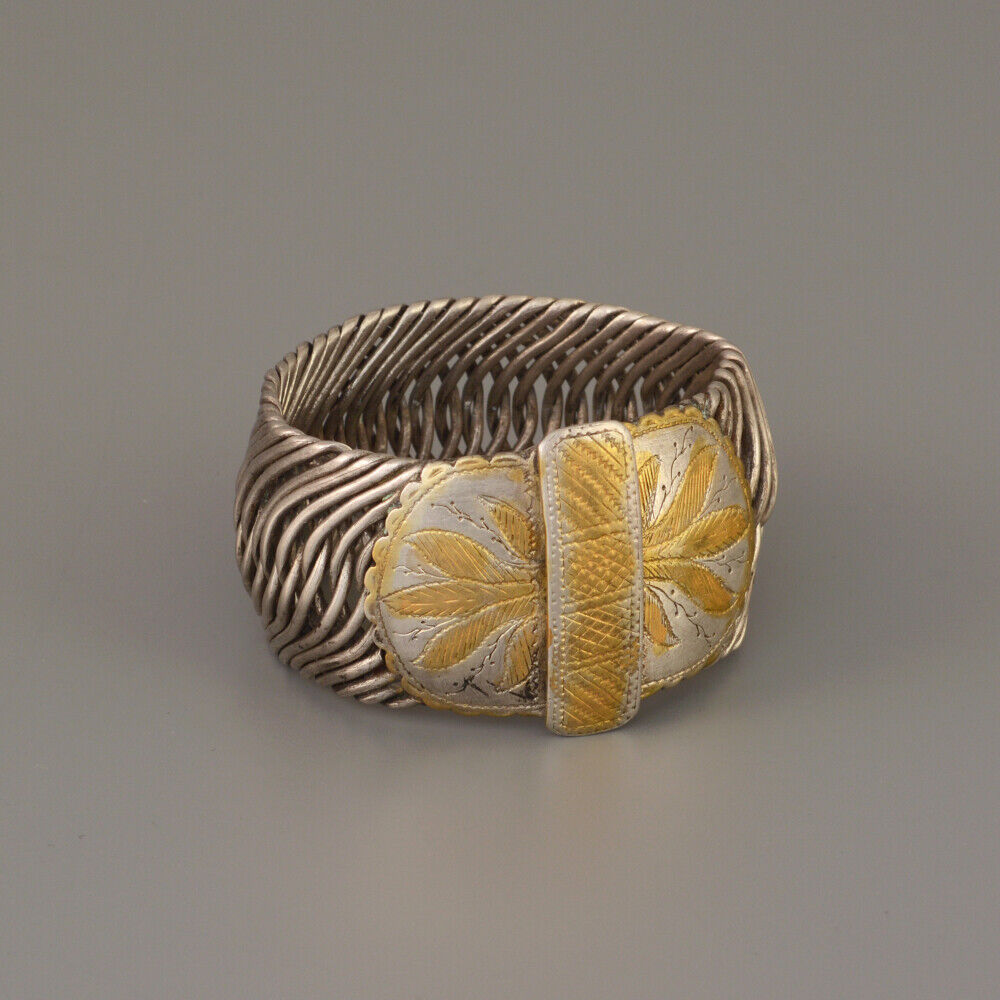-40%
Lapis Lazuli Pendant 30ct Ancient Armenian Assyrian Empire BC3000 Gem of Heaven
$ 116.15
- Description
- Size Guide
Description
5,000 Year Old 30 Carat Hand-Carved Ancient Assyrian Gold-Flecked Midnight Blue Lapis Lazuli Semi-Precious Gemstone Disc-Shaped Pendant and Chain.ATTN EBAY!!! DO NOT REMOVE THIS LISTING!!! As per Trust & Safety, this does NOT violate the USA Embargo against SYRIA. This artifact is from present-day ARMENIA, from when Armenia was part of the ASSYRIAN Empire. Please note, though ASSYRIA and SYRIA sound similar, they are NOT the same. Ancient Assyria was an empire which existed from about 3,000 B.C. to 600 B.C., and has NOTHING to do with present day SYRIA. This item does NOT violate eBay policy, and is NOT embargoed. Please see: https://en.wikipedia.org/wiki/Assyria.
CLASSIFICATION
: Semi-Precious Lapis Lazuli, Hand-Drilled Suspension Hole (Bow Drill), Hand Shaped Pendant.
ATTRIBUTION
: Ancient Assyria (Present-Day Armenia), Approximately 2,900 (3rd Millennium) B.C.
SIZE/DIMENSIONS
:
Weight: 30 carats.
Diameter: 28 millimeters.
Thickness: 6.5 millimeters (at center); 2 millimeters (at perimeter).
Chain: Contemporary gold electroplate 60 centimeters (24 inches). A wide variety of other chains are available upon request in sizes from 16 to 30 inches, and in metals ranging from gold and silver electroplate to sterling silver and solid 14kt gold as well as a bronze-toned copper chain. The default chain (absent contrary instructions) is gold electroplate, 24 inches. For a more authentic touch, we also have available high quality (solid, not formed) handcrafted Greek black leather cords.
CONDITION
: Exceptional! Completely intact.
DETAIL
: A richly colored natural dark blue lapis lazuli semi-precious gemstone which originated from the 7,000 year old mines at Badakhshan in Afghanistan, source of lapis lazuli for the ancient Egyptians, Sumerians, Phoenicians, and the rest of the ancient world, who referred to lapis lazuli as the "gemstone of the heavens", as the golden-flecks of sparkling iron pyrite in the deep blue body was often associated by the ancients with the stars in the heavens. Some of the most splendid ancient jewelry ever unearthed by archaeologists was found in Queen Pu-abi's tomb at Ur in Sumeria dating from the 3rd millennium B.C., and in the ancient Egyptian Pharaoh Tutankhamen's tomb. Lapis Lazuli was one of the most prominent gemstones found within these tombs, including on the famous mask of Tutankhamen.
This beautiful genuine ancient lapis lazuli gemstone pendant was hand-carved about 5,000 years ago! Attributable to the ancient Assyrian culture, pendants such as these were quite common (and quite the fashion statement) during the 3rd and 2nd Millenniums B.C. The round disc shape is somewhat uncommon, not one of the more ordinary shapes usually uncovered. It is much thicker in the center than at the perimeters, resembling an ocean skate or ray. This dark blue specimen possesses glittering highlights of golden iron pyrite inclusions ("fools gold"). Lapis Lazuli was a highly favored semi-precious gemstone in the ancient world; not only in ancient Assyria and Mesopotamia, but as well in the Levant, Anatolia, Egypt, and throughout the ancient Mediterranean as well.
Evidence suggests that lapis lazuli has been utilized as a gemstone for at least 10,000 years, making it along with pearls, turquoise, carnelian, and amber, amongst the "oldest" gemstones utilized by ancient cultures for decorative purposes. The ancient Egyptian, Persian, Greek, Phoenician, and Roman cultures all highly favored lapis lazuli. Renaissance artists used ground lapis as pigment for the fabulous blue in the era's masterpieces of art. Still very popular in Eastern Europe, the columns of St. Isaac's Cathedral are lined with lapis, and the Pushkin Palace (both in St. Petersburg) has lapis lazuli paneling over twenty meters (sixty feet) in height! This extraordinary pendant has been mounted onto a twenty-four inch 14kt gold electroplated chain. If you would prefer, we also have available sterling silver and solid 14kt gold chains in lengths from 16 to 30 inches.
HISTORY OF ANCIENT ASSYRIA:
Assyrians trace their heritage to an ancient race of the same name, one of the few major factions which appeared after the collapse of the Akkadian Empire; the world's first Semitic empire created under Sargon I. At its peak, the Assyrian empire encompassed what is now western Iran, all of Mesopotamia and Syria, Israel, the Armenian highlands, and even threatened Egypt in the 8th and 7th centuries B.C. The ancient Assyrians were masters of siege warfare, and subdued many other ancient peoples of the region. For these reasons, the ancient pre-Christian Assyrians were greatly feared by other ancient peoples of the region. Eventually however the Assyrians were one of the first nations to adopt Christianity as their state religion almost two thousand years ago.
Assyria proper was located in a mountainous region, extending along the Tigris as far as the high Gordiaean or Carduchian mountain range of Armenia, sometimes called the "Mountains of Ashur". Little is known about the ancient Assyrians prior to the 25th century B.C. The original capital city of ancient Assyria was Ashur, and was originally part of Sargon the Great's Persian Empire (circa 24th century B.C.). Destroyed by barbarians, Assyria ended up being governed as part of the Third Dynasty of Ur, before eventually becoming an independent kingdom about 1900 B.C. The city-state of Ashur had extensive contact with cities on the Anatolian plateau (present-day Turkey). The Assyrians established "merchant colonies" in Cappadocia which were attached to Anatolian cities, but physically separate, and had special tax status. They must have arisen from a long tradition of trade between Ashur and the Anatolian cities. The trade consisted of metal and textiles from Assyria that were traded for precious metals in Anatolia.
The city of Ashur was conquered by the Hammurabi of Babylon, and ceased trading with Anatolia because the goods of Assyria were now being traded with the Babylonians' partners. In the 15th century B.C. the Hurrians of Mitanni sacked Ashur and made Assyria a vassal. Assyria paid tribute to the Mitanni until they collapsed under pressure from the Hittites, when Assyria once again became an independent kingdom in the 14th century B.C., though at times a tributary of the Babylonian kings to the south. As the Hittite empire collapsed from onslaught of the Phrygians, Babylon and Assyria began to compete with one another for the Amorite lands formerly under firm Hittite control. The Assyrians defeated the Babylonians under Nebuchadnezzar when the forces encountered one another in this region. By 1120 B.C. the Assyrians had advanced as far as the North Sea on one side, the Mediterranean on the other, conquering Phoenicia, and had also subjugated Babylonia as well.
Thereafter for nearly two centuries however the Assyrian's grip over this vast empire steadily weakened centuries until when in 911 B.C. a strong ruler consolidated the Assyrian territories, and his success then embarked on a vast program of merciless expansion. In the mid ninth century B.C. the King of Israel marched in alliance with the Aramaic Kingdom against Assyria, the conflict ending in a deadlock, but a deadlock which presaged a withdrawal of Assyrian forces from the region of the Levant. The following centuries saw a continued decline of Assyria, the only exception being expansion on one front as far as the Caspian Sea. However by the eight century B.C. Assryia had again become strong under Sargon the Tartan, again conquering both Philistine, Israel, Judah, and Samaria.
In 705 BC, Sargon was slain while fighting the Cimmerians and was succeeded by his son who moved the capital to Momrveh. By 670 B.C. Assyria even briefly conquered Egypt, installing Psammetichus as a vassal king in 663 B.C. This proved to be the high water mark for ancient Assyria however. The Assyrian King Ashurbanipal had promoted art and culture and had a vast library of cuneiform tablets at Nineveh, but upon his death in 627 B.C., the Assyrian Empire began to disintegrate rapidly. Babylonia became independent; their king destroyed Nineveh in 612 B.C., and the mighty Assyrian Empire fell and ceased to exist as an independent nation.
LAPIS LAZULI HISTORY:
Most lapis lazuli contains iron pyrite in the form of golden flecks sprinkled throughout the gemstone, the hallmark characteristic of lapis lazuli, often compared by ancient populations with stars in the sky. Lapis Lazuli was among the treasures of ancient Mesopotamia, Byzantium, Egypt, Persia, Greece and Rome. Lapis Lazuli gets its name from the Arabic word "allazward", meaning "sky-blue". Along with turquoise and carnelian, the three are undoubtedly amongst the most ancient of gemstones. For more than 7,000 years lapis lazuli has been mined as a gemstone in Afghanistan, near ancient Mesopotamia, and traded throughout the ancient Mediterranean world.
The ancient source of lapis lazuli was these very same mines at Badakhshan (also known as the “Hindu-Kush” mountains), in the Persian highlands above the fertile Mesopotamian lowlands. The Persian highlands and plateau provided many of the raw materials lacking in the ancient civilizations abounding in the Mesopotamian lowlands (the "fertile crescent"). Records indicate that the Sumerian city of Ur imported lapis lazuli from the mines at Badakhshan as early as 4,000 B.C. In fact, the ancient royal Sumerian tombs of Ur, located near the Euphrates River in lower Iraq, contained more than 6,000 beautifully executed lapis lazuli statuettes of birds, deer, and rodents as well as dishes, beads, and cylinder seals.
Most ancient jewelry typically used one or more of three gemstones (carnelian, turquoise), and lapis lazuli was certainly very popular. How popular? One of the richest examples of ancient jewelry is Queen Pu-abi's tomb at Ur in Sumeria dating from the 3rd millennium B.C. In the crypt the queen was covered with a robe of gold, silver, lapis lazuli, carnelian, agate, and chalcedony beads. The lower edge of the robe was decorated with a fringed border of small gold, carnelian, and lapis lazuli cylinders. Near her right arm were three long gold pins with lapis lazuli heads, and three amulets in the shape of fish. Two of the fish amulets were made of gold and the third, you guessed it, lapis lazuli. On the queen's head were three diadems each featuring lapis lazuli.
At roughly the same point in time as Queen Pu-abi’s reign in Ur, lapis lazuli was also certainly popular in 3,100 B.C. with the Egyptians who used it in medicines, pigments (ultramarine), cosmetics (eye-shadow), carved into seals, and of course, in jewelry. The famous mask covering the head of Tutankhamen's mummy is inlaid primarily in lapis lazuli, with accents of turquoise and carnelian. In both the tombs of Tutankhamen and Queen Pu-abi, two of the richest tombs in all history, lapis lazuli was featured prominently in both. Called the "stone of rulers," in ancient kingdoms like Sumer and Egypt, lapis was forbidden to commoners, worn only by royalty. Ancient Egyptians believed lapis lazuli to be sacred and used it in the tombs and coffins of pharaohs.
Much of the lapis lazuli which flowed through the ancient land of Bactria and into Ur was exported to Egypt, where it was known as “khesbed”, which translates to “joy and delight”. In ancient Egypt lapis lazuli was widely used as a talisman believed to provide its wearers with good luck and ward off evil spirits and injury. Lapis lazuli was also thought to possess life-giving powers in ancient Egypt. Lapis was used to produce amulets to protect the mummified remains of pharaoh and commoner alike. It was a common practice to place a lapis amulet, engraved with a chapter of the Book of the Dead, over the area where the heart had been removed from the mummified remains (the heart was believed to be the repository of the soul), prior to the sealing of the sarcophagus.
Archaeological discoveries also have made it abundantly clear that coupled with gold, lapis lazuli was valued simply for its beauty as jewelry. Lapis lazuli was also associated with the ancient Egyptian Goddess “Hathor”, goddess of love, music, and beauty, who was often referred to as "the lady of lapis lazuli." Lapis was also associated with both the night sky and the rising run, which was sometimes referred to as the "child of lapis lazuli." The stone was also associated with the primordial waters of the ancient Egyptian creation myth. The Nile was rendered in blue color on grave paintings, blue thought to represent fertility. Lapis lazuli hippopotamuses produced by ancient Egyptian artisans were popular as symbols for the life-giving river.
There’s also some evidence that ancient Egyptian judges wore carved lapis amulets of Ma'at, the Goddess of truth, balance and order. These concepts were fundamental to Egyptian life and the rule of the Pharaohs, who portrayed themselves constantly as "Beloved of Ma'at" and "upholders of the universal order". Ancient Egyptian hieroglyphs also described medicinal uses for lapis lazuli, including its use powdered, mixed with milk and mud from the Nile as a treatment for cataracts as well as head pains. And of course the ancient Egyptians made wide use of lapis lazuli as eye shadow. In fact, historians document its use as eye shadow by Cleopatra, last of the Ptolemaic rulers of Ancient Egypt.
Popular with another Middle Eastern people, the Israelites, lapis is generally acknowledged by Biblical scholars to be one of the breastplate stones of the High Priest. To the ancient Hebrews, lapis lazuli was the symbol of success, capturing the blue of the heavens and combining it with the glitter of gold in the sun. It was also believed by the ancient Hebrews that the tablets upon which Moses received the Ten Commandments were of lapis lazuli. Lapis lazuli was also used by the ancient Assyrians and Babylonians for cylinder seals. According to one ancient Persian legend, the heavens reflected their blue color from a massive slab of lapis upon which the earth rested. Throughout the history of the Ancient Middle East, lapis lazuli has often been regarded a sacred stone and to possess magical powers.
The first century Roman historian and naturalist Pliny the Elder accurately described lapis lazuli, though the ancient Romans referred to it as “sapphirus”. The Romans also used lapis lazuli as an aphrodisiac, and associated lapis lazuli with the lord of Gods of the Roman pantheon, “Jupiter” (“Zeus” to the ancient Greeks). Lapis lazuli was also accurately described by Theophrastos, the fourth century B.C. Greek philosopher and naturalist. In addition to its use in jewelry, lapis lazuli has also been used since ancient times for mosaics and other inlaid work, carved amulets, vases, and other objects. In antiquity, as well as in the Middle Ages, there was the belief that the cosmos was reflected in gemstones. Lapis lazuli was associated with the planet Jupiter.
In the medieval world lapis was ground and used as a pigment as well as for medicinal purposes. For medicinal applications, the powdered lapis lazuli was mixed with milk and used as a compress to relieve ulcers and boils. Lapis Lazuli and the mines at Badakhshan were described by Marco Polo in 1271 A.D., though the first written accounts of the mines had been produced three centuries earlier, in the tenth century A.D., by the Arab historian Istakhri. When lapis was first introduced to Europe, it was called "ultramarinum", which means "beyond the sea". It was identified as an emblem of chastity, and was thought to confer ability, success, divine favor, and ancient wisdom.
According to the 17th century “Complete Chemical Dispensatory”, lapis lazuli was effective as a cure for sore throat, used to combat melancholy, and a cure for “apoplexies, epilepsies, diseases of the spleen, and many forms of dementia”. The text also indicated that it could be worn about the neck as an amulet to drive away frights from children (timid children were given necklaces of lapis beads in the belief that they would develop courage and fearlessness) to strengthen sight, prevent fainting, and also to prevent miscarriages. Wearing an amulet made of lapis was also thought to free the soul from error, envy and fear as well as protect the wearer from evil. Ground lapis was also the secret of the blue in ultramarine, the pigment which painters used to paint the sea and the sky until the nineteenth century.
Used as a pigment most extensively in the fourteenth and fifteenth centuries, the secret behind some of the most beautiful Renaissance-inspired paintings was ground lapis lazuli. In no small part due to the tremendous demand for lapis to produce ultramarine, the cost of lapis was exorbitant in Renaissance Europe. A price list of gems in the eighteenth century, using the emerald as the unit of value, ranked sapphire as twice the value of emerald, ruby as thrice the value, and lapis as fifteen times the cost of emerald. Lapis was also popular in inlays. In what was once one of the cultural capitals of Europe, the columns of St. Isaac's Cathedral in St Petersburg, Russia are lined with lapis (see
here
,
here
, and
here
), and the Pushkin Palace has forty foot tall lapis lazuli paneling (see
here
,
here
, and
here
)! Though most of the lapis used in Russia’s landmark architecture was again, from Afghanistan, lapis lazuli was eventually discovered at Russia’s Lake Baikal, as well as in the Pamir Mountains of Central Asia (see
here
and
here
).
In the ancient history of Mesoamerica, an inferior grade of lapis lazuli was mined in Northern Chile for over 1,000 years by the Moche, a culture from the coast of Northern Peru (200 B.C. to 800 A.D.), who were skilled metalworkers, producing ornaments made of gold, silver, and lapis lazuli. Their traditions were carried forward by their successors the Chimu for another 600 years, the Chimu in turn ultimately absorbed by the Incas. Throughout the history of the ancient world, gemstones were believed capable of curing illness, possessed of valuable metaphysical properties, and to provide protection. Found in Egypt dated 1500 B. C., the "Papyrus Ebers" offered one of most complete therapeutic manuscripts containing prescriptions using gemstones and minerals.
Gemstones were not only valued for their medicinal and protective properties, but also for educational and spiritual enhancement. In the ancient world it was believed that ground lapis lazuli consumed as a supplement bolstered skeletal strength and thyroid function. It was also believed to improve sleep, cure insomnia, and was used to treat varicose veins. On the metaphysical plane, lapis lazuli was believed to enhance ones awareness, creativity, extra-sensory perception, and expand ones viewpoint, while keeping the spirit free from the negative emotions of fear and jealousy. Even today lapis lazuli is regarded by many cultures around the world as the stone of friendship and truth. The blue stone is said to encourage harmony in relationships and help its wearer to be authentic and give his or her opinion openly.
SHIPPING & RETURNS/REFUNDS
: Your purchase will ordinarily be shipped within 48 hours of payment. We package as well as anyone in the business, with lots of protective padding and containers. All of our shipments are fully insured against loss, and our shipping rates include the cost of this coverage (through stamps.com, Shipsaver.com, the USPS, UPS, or Fed-Ex). International tracking is provided free by the USPS for certain countries, other countries are at additional cost.
ADDITIONAL PURCHASES
do receive a
VERY LARGE
discount, typically about per item so as to reward you for the economies of combined shipping/insurance costs. We do offer U.S. Postal Service Priority Mail, Registered Mail, and Express Mail for both international and domestic shipments, as well United Parcel Service (UPS) and Federal Express (Fed-Ex). Please ask for a rate quotation. We will accept whatever payment method you are most comfortable with.
If upon receipt of the item you are disappointed for any reason whatever, I offer a no questions asked 30-day return policy. Send it back, I will give you a complete refund of the purchase price; 1) less our original shipping/insurance costs, 2) less non-refundable PayPal/eBay payment processing fees. Please note that PayPal does NOT refund fees. Even if you “accidentally” purchase something and then cancel the purchase before it is shipped, PayPal will not refund their fees. So all refunds for any reason, without exception, do not include PayPal/eBay payment processing fees (typically between 3% and 5%) and shipping/insurance costs (if any). If you’re unhappy with PayPal and eBay’s “no fee refund” policy, and we are EXTREMELY unhappy, please voice your displeasure by contacting PayPal and/or eBay. We have no ability to influence, modify or waive PayPal or eBay policies.
ABOUT US
:
Most of the items I offer come from the collection of a family friend who was active in the field of Archaeology for over forty years. However many of the items also come from purchases I make in Eastern Europe, India, and from the Levant (Eastern Mediterranean/Near East) from various institutions and dealers. Though I have always had an interest in archaeology, my own academic background was in sociology and cultural anthropology. After my retirement however, I found myself drawn to archaeology as well. Aside from my own personal collection, I have made extensive and frequent additions of my own via purchases on Ebay (of course), as well as many purchases from both dealers and institutions throughout the world – but especially in the Near East and in Eastern Europe. I spend over half of my year out of the United States, and have spent much of my life either in India or Eastern Europe. In fact much of what we generate on Yahoo, Amazon and Ebay goes to support The Hermitage Museum in St. Petersburg, as well as some other worthy institutions in Europe connected with Anthropology and Archaeology.
I acquire some small but interesting collections overseas from time-to-time, and have as well some duplicate items within my own collection which I occasionally decide to part with. Though I have a collection of ancient coins numbering in the tens of thousands, my primary interest is in ancient jewelry. My wife also is an active participant in the “business” of antique and ancient jewelry, and is from Russia. I would be happy to provide you with a certificate/guarantee of authenticity for any item you purchase from me. There is a fee for mailing under separate cover. Whenever I am overseas I have made arrangements for purchases to be shipped out via domestic mail. If I am in the field, you may have to wait for a week or two for a COA to arrive via international air mail. But you can be sure your purchase will arrive properly packaged and promptly – even if I am absent. And when I am in a remote field location with merely a notebook computer, at times I am not able to access my email for a day or two, so be patient, I will always respond to every email. Please see our
"ADDITIONAL TERMS OF SALE."
